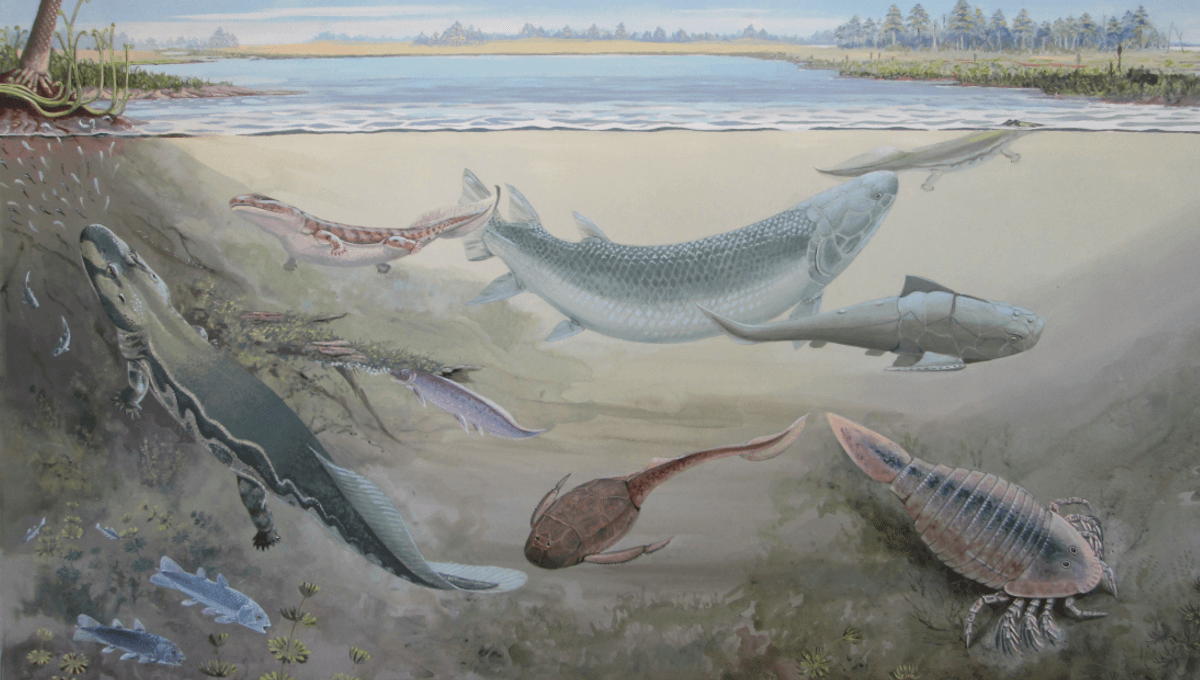
A porcupine quill and some careful excavation have enabled researchers in South Africa to identify a new species of enormous predatory fish dating back to around 360 million years ago. It was retrieved from Waterloo Farm in Cacadu District Municipality, Eastern Cape, and is thought to have been almost 3 meters long making it a giant of the tristichopterids, a diverse group of fishes that lived during the Middle and Late Devonian.
The long boy of the Waterloo Farm Lagerstätte is said to most closely resemble the known species Hyneria lindae. A fellow tristichopterid, these fish were found globally during the Famennian (the latter of two faunal stages in the Late Devonian Epoch) and are one of the most common non-marine species found in what were once brackish ecosystems. Their enormous range demonstrates the interconnectedness of the Famennian world, but exactly where on Earth they started out is the subject of ongoing research.
This new tristichopterid species was retrieved from a roadside cutting outside Makhanda / Grahamstown, explain the authors of a new paper, and is now being kept that the Albany Museum. It’s made up of dermal bones and parts of the skeleton and paired fins, giving them enough to recreate the full cranial morphology.
The specimen joins Mandageria as one of the only large tristichopterid fish it’s been possible to do a whole-body recreation for. The size of its bones indicated that it was around 2.7 meters (8.9 feet) in length, making it a giant of its kind.
Dense packing of the muddy carbonaceous metashale in which they were preserved meant some fine details survived the test of time including some scales, but interestingly the teeth survived less well than the bones.
The new species has been named Hyneria udlezinye and gets its latter name from the isiXhosa “udlezinye” meaning “one who eats others,” referring to the inferred predatory lifestyle of the enormous species. IsiXhosa is the widely spoken Indigenous language of south-eastern South Africa where the fossil was found.
“The discovery of Hyneria udlezinye increases the known diversity of large, late, tristichopterids, and presents us with the top non-chondrichthyan predator of the Waterloo Farm ecosystem,” concluded the study authors. “However, arguably its main importance lies in the light that it casts on tristichopterid (and more generally, vertebrate) biogeography of the Late Devonian.”
The study was published in PLOS ONE.
Source Link: Giant New Species Of Extinct Predatory Fish Was The Length Of Five Corgis